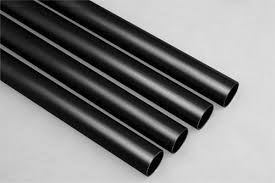1. Can black steel pipe be painted?
Spray painting is a common surface treatment used to protect and beautify black steel pipes. Painting can help prevent steel pipes from rusting, slow corrosion, improve appearance quality, and adapt to specific environmental conditions.During the production process of black steel pipes, problems such as rust and dirt may occur on the surface, and spray painting can effectively solve these problems. At the same time, spray paint can make the surface of the steel pipe smoother, improve its durability and aesthetics, and extend its service life.At the same time, galvanizing black piping is also a common anti-corrosion method. Galvanizing is a method of electrochemical treatment on metal surfaces. By attaching zinc ions to the metal surface, a layer of zinc coating is formed to achieve anti-corrosion, anti-corrosion, wear-resistant, and other effects. The basic principle of galvanizing is to use an electrolysis reaction to reduce zinc ions from the solution to the metal surface, forming a tightly bonded coating with the substrate.

2. Cleaning the black tubes with before painting
Before painting the black pipe, you should use an electric rotating wire brush to remove rust. First, clean up the residual oil on the surface of the black pipe, then use a hammer or wire brush and waste grinding wheel to remove the serious thick rust and welding slag, and then use a scraper, emery cloth, and coarse rags to remove scale, iron rust, and other dirt. If there are oil stains, use a cleaning agent to clean them.Use a wire brush to polish the angles, back angles, dead ends of the crossbars, and other parts in both directions multiple times. After cleaning, the surface will be clean and free of dirt. The level of rust removal should comply with ST2.5 standards. There should be no visible grease and dirt on the surface of the object to be coated, and no loosely adhered oxide scale, rust, and paint coating; the relative humidity of the atmospheric environment on the surface should be greater than 85%, and the metal surface temperature should not be lower than the dew point temperature of 3°C.
3. How to paint black steel tubes?
(1) Before use, the anti-corrosion coating should be inspected twice, and it can be painted only after passing the test. When using paint, stir it evenly. For two-component paints, the proportions must be strictly followed and cannot be changed. When using thinner, its type and dosage should comply with the manufacturer's standards. When preparing paint, it must be filtered through a fine copper wire mesh and the viscosity must be measured with a coating cup before use.(2) After the first coat of paint is dry, the next coat can be applied. The layers should be crisscrossed and evenly applied, and each layer should be applied in a reciprocal manner. All coatings must not be missed. The coating surface should be smooth and flat, consistent in color, without defects such as pinholes, bubbles, sags, peeling, powder paint, damage, etc. The bonding strength should reach level 2 or above. The thickness of each layer and the total dry film thickness should be complete. Meet the technical specifications of the paint.
(3) Manual painting should be done from top to bottom, from left to right, inside first and then outside, first diagonally and then straight, first difficult and then easy, and in a criss-cross pattern.
(4) The interval between each coat should not exceed an hour. It is best to apply the second coat when the first coat of paint is not dry. If the coating has been cured for a long time, polish it with emery cloth before applying the next coat of paint.
(5) Before each process is concealed, it must be inspected and accepted by Party A’s quality inspection personnel to ensure that the surface is clean and free of paint and dust. Each paint film must use a paint film thickness gauge to check whether the dry film thickness meets the design requirements.
(6) The thickness of each coating should be strictly controlled during construction, and the thickness must meet the design requirements. For dead corners and difficult-to-brush areas on external components, use a small brush to apply the paint first to avoid missing paint or missed brushing. Rust removal of small components must be thorough, and spray paint can be used during anti-corrosion to ensure the integrity of the paint film.









